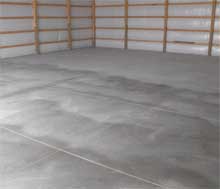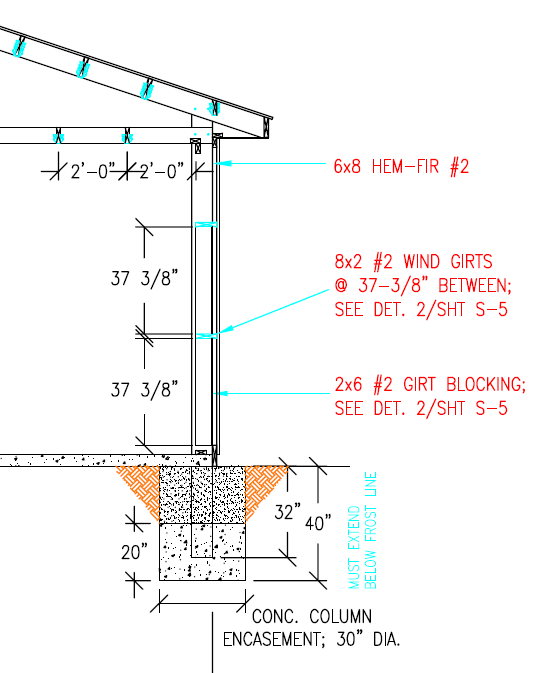Fear of Concrete Slab Cracking at Post Corners
Nothing appears to add to the self-importance of a contractor more than instilling fear into the hearts and minds of their clients. If I had a dollar for every fear mongering story I have heard over the years, I would be a wealthy man!
Hansen Pole Buildings’ client PAUL writes:
“Hello, I’m Paul in McCall Idaho and I purchased a 14′ x 36′ pole building last fall from you and I had a quick question. I am getting ready to pour the concrete floor and the concrete guy helping me was concerned that the floor will crack on all the post corners and wants to do some changes to prevent it. I have never heard that that was a concern and thought I would consult you guys as I know you’ll have the correct answer. SO, is that something to be concerned about?? Thanks for the help and I know my account is closed by now but figured you’d have a quick answer for me. Thanks a lot.”
Mike the Pole Barn Guru responds:
We’ve never heard this as a concern either, so perhaps you can get your concrete finisher to share research studies he has read which elaborate upon this supposed challenge. I personally have owned (or still own) several post frame buildings with concrete slabs and have never experienced issues with floor cracks other than where they are supposed to be – along control joints or saw cuts.
 The most important things to avoid cracking where not desired is to have dedicated allowance locations for cracks (e.g. expansion joints or saw cuts should be located every eight to 12 feet for a four inch thick slab), have a properly prepared and well compacted site, eliminate sources of water which would or could flow under the slab, reinforce the slab (by use of one or more of the following – fiberglass strands, wire mesh, rebar) and to have the slab tied into the columns by use of rebar hairpins through the columns. The clean sand between the vapor barrier and the concrete should be moistened prior to the pour as well. Concrete mix with too much water in it will lead to future cracking. It is more work to pour with less water, but the end result will be far better. Keeping the slab well hydrated (water on top of the slab) for the first month after the pour will retard the speed of curing making the slab not only stronger, but also will reduce the cracking.
The most important things to avoid cracking where not desired is to have dedicated allowance locations for cracks (e.g. expansion joints or saw cuts should be located every eight to 12 feet for a four inch thick slab), have a properly prepared and well compacted site, eliminate sources of water which would or could flow under the slab, reinforce the slab (by use of one or more of the following – fiberglass strands, wire mesh, rebar) and to have the slab tied into the columns by use of rebar hairpins through the columns. The clean sand between the vapor barrier and the concrete should be moistened prior to the pour as well. Concrete mix with too much water in it will lead to future cracking. It is more work to pour with less water, but the end result will be far better. Keeping the slab well hydrated (water on top of the slab) for the first month after the pour will retard the speed of curing making the slab not only stronger, but also will reduce the cracking.
When I was building myself, one thing I would always guarantee with concrete slabs – they will, at some point, crack. It’s the nature of concrete.








Concrete will crack at corners such as structure or poles. The remedy is to provide a joint at every pole corner. This may sound like you will end up with a tartan plaid but my method is with zip strips between the inboard corners of the poles along the perimeter, and across aisles both sides of poles out in the field, as needed to further divide the slab field into 12’x12′ maximum (can be rectangles of smaller or equal to 12′ dimensions also) approaching square is the best configuration. Zip strips will leave hairline cracks that are as straight as you lay it, and the finished slab looks great. No saw cutting and no hand tooling required except at cold joints.
How do you successfully fit your zip strips around the rebar hairpins which tie the columns into the slab?